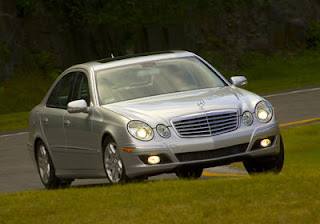
Some ideas:
GET REAPPRAISED. If the house has tumbled in value, your property taxes should, too. So get your house reappraised by your municipal assessor. You may even be able to petition, or sue if you must, to get back some taxes you overpaid in past months.
HOME OFFICE. Got a room you use to make a living? Dust off your receipts. You might be able to deduct some depreciation and a pro rata share of utilities and maintenance. The depreciation lowers your cost basis, which can come back to bite you when you sell at a profit. But if the property has lost value, this is not an issue.
Many caveats apply, since the Internal Revenue Service closely scrutinizes home-office deductions, warns Mark Nash, a partner at PricewaterhouseCoopers' private company services. If you are an employee, (a) the home office has to be not just permitted by but useful to your employer, and (b) only the amount exceeding 2% of adjusted gross income can be claimed (as "miscellaneous" items). If you are self- employed, the home office can only reduce your taxable income; it cannot create a loss. For both categories of worker, the room in question has to be used regularly and exclusively for work; a den where you occasionally write software won't cut it.
SALE-LEASEBACK WITH RELATIVE. Suppose the $1 million home you and your spouse bought five years ago in Washington, D.C. has been appraised at $1.8 million, but you're convinced your neighborhood is in for a 20% correction. Sell now and you'll pocket $500,000 of the $800,000 gain tax free, thanks to the exemption on profits from the sales of personal residences. You'll pay a 15% federal tax on the rest.
Sell the property to a wealthy relative you can trust, ideally a parent or grandparent who's got a few million tied up in safe yet stingy Treasury bonds. Then become a tenant. Your rent, which covers your property taxes and insurance but not utilities: less than $6,000 per month.
Have outsiders certify that the sale of the house and the rent are done at market rates so the IRS can't argue that the arrangement is a sweetheart deal designed to disguise a gift from the parents and thus keep their estate taxes low.
BUY IT BACK, POSTCORRECTION. If your parents had planned to pass along an inheritance to you worth more than $2 million, it faces a 45% estate tax on anything above that amount. Continuing the example from above, suppose in three years the housing market has corrected 20% and stabilized.
Your parents can sell the real estate to you now at the diminished value of $1.44 million. The $360,000 loss they've endured on your behalf is not, if the price was fair at the time of the transaction, a taxable gift.
This clever strategy can go wrong, though, notes PricewaterhouseCoopers' Nash. If the housing market surprises you and booms instead of tanks, you may have to buy back your house from your parents at the inflated value. They get stuck paying a 15% tax on the gain in their investment property.
Let's say they sell it on the open market instead of back to you. The $360,000 loss in value on the home is a capital loss because it was a commercial venture and they were landlords, so it can be used to offset gains on your parents' other investments.
FUTURES CONTRACTS. A year and a half ago the Chicago Mercantile Exchange (nyse: CME - news - people ) launched investment instruments that trade based on house price indexes for each of the ten largest U.S. cities. The indexes are managed by Case Shiller Weiss, a Cambridge, Mass. consultancy cofounded by Yale law professor Robert Shiller.
You can sell futures, buy puts or sell calls on this market to hedge losses in the value of your home. Example: You have a $3 million home in Los Angeles, and you're confident that it will shed 30% of its value by November 2009. You can have a broker sell futures contracts on your behalf in Chicago, where traders have lately been betting that the house-price index in Los Angeles will fall only 11.5% over the next two years.
Two-year L.A. futures contracts were trading recently for about $57,000 each. Selling 52 of them would cover a $3 million house. You'll need to put up $120,000 in a margin account to cover your trade, and a round-trip trade on a single contract with a discount broker will cost you $50 in fees.
For you to be right and earn a profit on your contracts, prices in Los Angeles must fall more than 11.5%. Thus a 20% drop in the L.A. housing index, say, would generate a $255,000 profit on your contracts, partly compensating you for the $600,000 loss in value on your home in L.A. A 30% fall in the index would generate $555,000 in profits on your contracts, making up a goodly portion of the $900,000 loss in value on your house.
But if housing prices in L.A. fall less than 11.5%, you'll pay the holder of your contracts out of pocket. So if, say, housing falls only 5% in L.A. in two years, you'll owe $190,000 on your contracts. (Plus you're out $150,000 in value on your home.) You face a high risk with this trade nowadays, explains New York housing derivatives broker Fritz Siebel, who trades the contracts daily for institutional clients, because "the market is already anticipating a correction in L.A."
PARTIAL SALE. A simple way to limit your downside is to sell a chunk of the equity in your house to an investor. Suppose you've paid off your $3 million Chicago home's mortgage and you have firm plans to sell it when you retire in three years and move to Palm Springs. Your neighbor covets your home and has a more optimistic view of its future worth than you do.
Offer to sell him 49% of the equity and the right of first refusal when you want to sell the whole thing. This is a way for him to lock in a partial price now and set himself up for a private (no brokers, no fees) purchase of the rest from you later. If the market surprises you and rises, you'll get only half the appreciation. But you've limited your downside.
The problem is that neighbors like this are hard to come by. A San Francisco firm called Rex & Co., backed by American International Group (nyse: AIG - news - people ), offers an intriguing alternative. Rex will buy 50% of the future change in value in your home over its current fair market value, paying you around 15% of the cash value of your home now (tax free) and taking back those funds plus half the appreciation--above what the house is worth now--when you sell your home after five years.
The deal is unappealing in a rising market but a good hedge when prices tumble. If Rex gives you $180,000 for the future appreciation of your $1.2 million home in Seattle and the house sheds 15% in value in the next five years, you pay back zero. Fees for title, escrow and other closing costs due at the outset are typically covered by Rex.
"It's ingenious," says New York financial adviser Michael Cohn, who has counseled some clients to consider taking the deal. (Most of Cohn's clients don't qualify because they own cooperative apartments in New York, and Rex won't purchase interests in co-ops.) Cohn says a deal with Rex is especially attractive in a falling market for homeowners who plan to sell in not much more than five years.
LEVERAGE UP, RENT OUT. Banks are still lending up to 95% of value to homeowners with the highest credit scores. California's Frank, a Realtor, is taking advantage of that. She has loaded $1.5 million in mortgage debt onto her three properties, eliminating higher-interest loans, and that leaves plenty of equity on the properties even if values sink considerably.
She's been charging $63,600 in yearly rent on two of the houses--she lives in the third--enough to cover the mortgage interest on those two at an aggregate of 6.1%, or $57,600 a year. She has $150,000 in leftover mortgage proceeds in bank certificates of deposit, yielding 5.5%. That provides valuable liquidity if the market gets even worse. "If I need the money, it's safe," she figures. That's more than can be said for the value of a house in Los Angeles these days.
VALUE DROPS
How much will your home values fall? Housing futures contracts data from the Chicago Mercantile Exchange offer a clue. Here's the expected decreases over the next two years, according to folks with money on the line, the traders.
Boston --11.6%
Chicago --6.9%
Denver --13.2%
Los Angeles --11.5%
New York --12.7%
Miami --16.1%




































